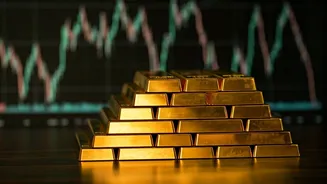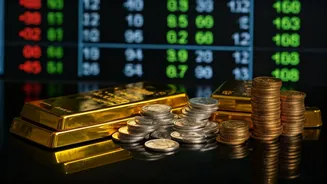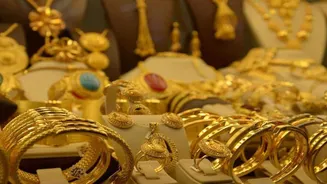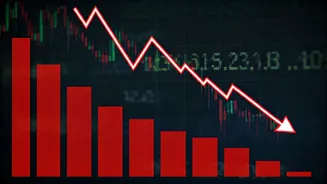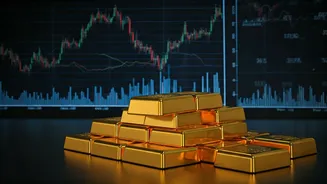Current Price Movements
The prices of gold and silver are constantly in flux, shaped by a multitude of economic variables. Lately, both metals have shown signs of weakness, leading
to discussions about the reasons for their decline. Several factors typically contribute to the shifts in these precious metal prices. These include the strength of the U.S. dollar, interest rate forecasts from the Federal Reserve, and shifts in investor sentiment influenced by the global economic outlook. Moreover, the demand from physical markets, especially from major buyers like China and India, influences price movements. The interplay of these forces creates a complex environment for gold and silver, making their price behavior a subject of much discussion among investors and financial analysts. It's crucial for anyone involved in these markets to keep abreast of these interconnected factors to understand the dynamics at play.
Dollar's Influence on Metals
The U.S. dollar often acts as a significant player in the trading of precious metals such as gold and silver. A robust dollar can make these metals more expensive for those using other currencies, which can suppress demand and lead to price decreases. Conversely, a weaker dollar can make gold and silver relatively cheaper, thus increasing demand and potentially boosting prices. Investors carefully monitor the dollar's performance as a crucial indicator of the economic climate and its possible impact on precious metal values. The dollar’s influence thus intertwines with the investment strategies in gold and silver, making it a critical consideration for market watchers.
Interest Rate Impact
Changes in interest rates, especially those set by the Federal Reserve, also significantly affect the prices of gold and silver. Higher interest rates typically increase the opportunity cost of holding non-yielding assets like gold and silver, which can make them less attractive to investors. As a result, demand might decrease, which could lead to lower prices. When interest rates are low, the appeal of gold and silver often increases as investors look for alternative safe havens for their money. Analyzing these interest rate adjustments provides significant insights into potential market trends and the movement of precious metal prices. Therefore, the connection between interest rates and metal prices is crucial for market participants to evaluate.
Investor Sentiment's Role
Investor sentiment forms another important factor influencing the prices of gold and silver. Overall market mood, which is influenced by economic reports, geopolitical risks, and global financial conditions, can significantly impact the demand for precious metals. During times of economic uncertainty or global instability, investors often turn to gold and silver as safe-haven assets, which boosts their prices. Conversely, during periods of economic stability and confidence, investors may move their funds into higher-risk assets, reducing demand for safe havens like gold and silver. Tracking investor sentiment, therefore, gives significant insights into market dynamics and offers indications of potential price movements.
Demand From India/China
India and China, prominent consumers of gold, significantly affect its price through their physical demand. Festivals, weddings, and investment habits in these countries strongly influence the gold market. When demand in these regions increases, it can lead to higher prices globally, due to increased purchases for personal use and investment. Conversely, decreased demand from these key markets can put downward pressure on prices. Monitoring the purchasing trends and patterns of these major economies, therefore, gives vital insights into the dynamics driving gold’s price movements. Understanding the influence of India and China is very important for accurately evaluating the market conditions.
Outlook for Gold/Silver
Predicting future prices of gold and silver involves analyzing various factors, including global economic conditions, the U.S. dollar, interest rate policies, and geopolitical events. Experts and analysts continuously assess these elements to project where prices may be headed. The general outlook for these metals can vary. It's essential to monitor these indicators and assess the overall market conditions. Investors may want to consider their risk tolerance, investment timeline, and financial goals before making decisions regarding gold and silver. The outlook offers guidance, but investors must perform due diligence.


